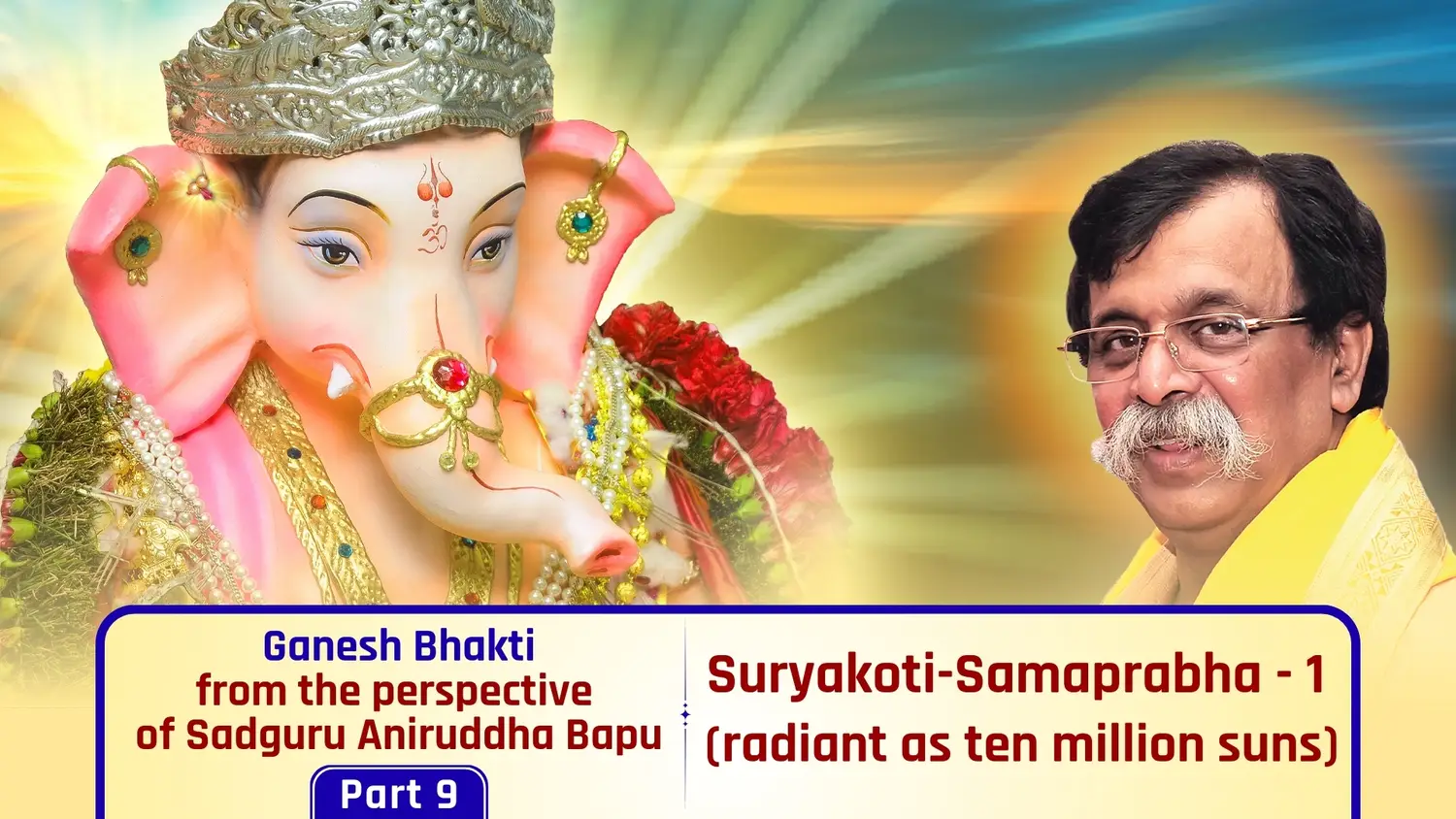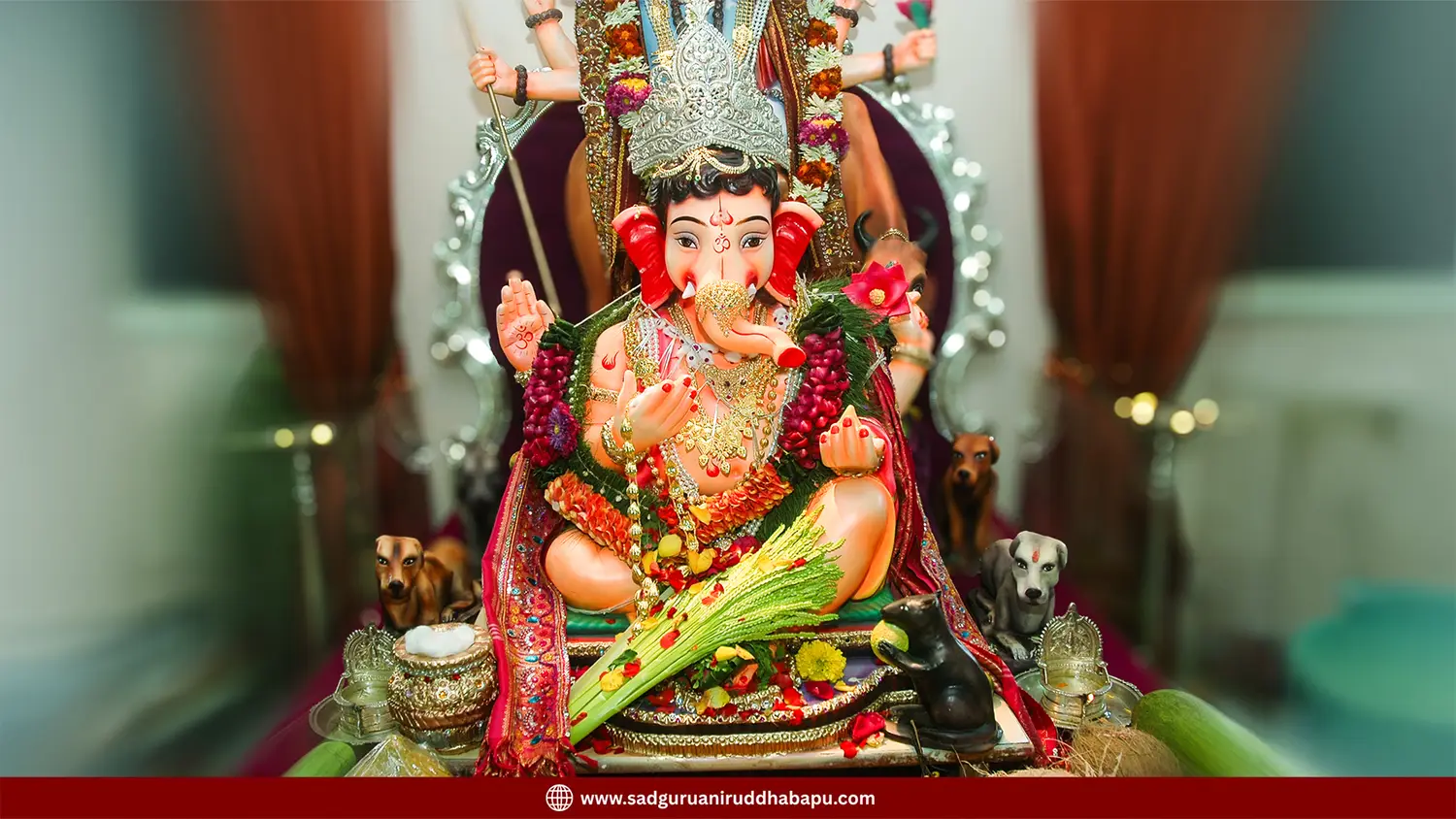Suryakoti-Samaprabha (Radiant as ten millions suns)

हिंदी मराठी ગુજરાતી ಕನ್ನಡ বাংলা తెలుగు മലയാളം
Reference: Sadguru Shree Aniruddha Bapu’s editorial published in Dainik Pratyaksha dated 03-09-2006
In the Indian kirtan tradition, various stories and narratives of different forms of the Paramatma are narrated. For literally thousands of years, the Naradiya style of kirtan has been carried on in India without interruption. In the Shree Sai Satcharita, Param Pujya Shree Hemadpant has firmly stated that the kirtan institution is indeed the seat (legacy - gadi) of Narada himself.
Through their kirtans, these kirtankars have propagated and spread pure bhakti, and have also made immense efforts to keep society as united as possible. From these very efforts, many authorities (adhikaris) of the legacy of Narad popularized virtues-based stories describing the greatness of the Almighty. As a result, they were easily able to establish a connection among the group of devotees of various forms of the Paramatma. In the kirtans of Shree Mahaganapati as well, many stories are presented as Shrirang. One such famous and popular folk tale is the “Andhakasura Akhyan” (Legend of Andhakasura). Little Ganesh acquired the elephant head and he began to play joyfully on Mount Kailash along with his parents i.e., Shiva and Shakti. His elder brother, Kartikeyaswami, had gone to Sage Brihaspati’s ashram for studies as per his father’s command.
Once, when Bhagwan Shivshankar was setting out for a tour of the universe with his attendants (Ganas), the young Ganesha insisted on accompanying him. It was naturally expected that on Mahadev's journey across the universe, there would be encounters with many demons (Asuras). Therefore, Mother Parvati felt that the young Ganesha should not go with his father. However, Shri Mahadev was willing to take his son along. Both Bhagwan Shiva and Mother Parvati were fully aware of Ganesh’s wisdom and strength. Yet, a mother’s heart is always a mother’s heart—no matter how strong her child may be, she will worry. Due to the young Ganesha's insistence and her husband's fiery and stubborn nature, Mother Parvati found herself in a dilemma.
Mother Parvati then remembered her beloved brother, Shri Vishnu. (Even today, in the Meenakshi Temple, during the depiction of Shiva and Parvati's wedding, Shri Vishnu is seen as Parvati's elder brother performing the Kanyadaan - the ritual of giving away the bride). At that very moment, Shri Vishnu, who appears the instant he is remembered (Smartrugami), manifested there.
The bond between a brother and sister, even on the human level, is extremely affectionate. On the divine level, the meanings and contexts of this relationship are of a highly sacred and symbolic nature because, in the divine realm among all of them, there is an essential oneness.
Mother Parvati explained her problem to Shri Vishnu, and he advised Parvati to engage in an argument with Mahadev over the matter and said, “The very moment his first word spoken in anger—comes out from his mouth, I will transform that word itself into a demon, and I will instill fear in young Ganesh’s mind about that terrifying, monstrous figure. As a result, little Ganesh himself will give up his insistence, and Shiva too, controlling his anger out of love for his child, will let go of his resolve to take Ganesh along.”
Everything happened just as planned, and Bhagwan Shiva set out on his mission. The young Ganesha remained behind on Mount Kailash with his mother. The demon that Bhagwan Vishnu had created from Mahadev's first word of anger dissolved as soon as its task was complete. However, the fear that had appeared in Shri Balganesh's mind was accepted by him purely out of love for his mother; it was the child who had actually fulfilled his mother's wish. As soon as Shri Mahadev left, the young Ganesha spat out this fear from his mind, and from that very spit, an extremely terrifying demon was created.
The demon born from that spat-out fear was none other than Andhakasura. From the very moment of his creation, Andhakasura began to increase his size and form, making himself more and more terrifying. The young Ganesh engaged him in battle, but since the demon was formed from the very impurity expelled from Ganesh’s own mind, the demon’s strength was by no means insignificant. The battle went on for twenty-nine days.
On the thirtieth day, the maternal uncle (Vishnu) decided to help his nephew. Taking a subtle form, Shri Vishnu sat upon the young Ganesha's traditional earring (bhikbali) and reminded him of his own true nature—a form 'as radiant as ten million suns' (Suryakoti-Samaprabha). With that, the splendor and brilliance of ten million suns began to radiate from the young Ganesha's complexion, and then, of course, Andhakasura was completely annihilated. When Shri Mahadev returned and heard this story, he went straight to Vishnuloka (the abode of Vishnu) and embraced Shri Vishnu with immense gratitude and love.
The tradition of placing a bhikbali (a traditional earring) in Ganpati's ear appears to have started from this very story.
At the end of the editorial, Sadguru Shri Aniruddha Bapu writes -
"We will look into the spiritual meaning and impact of this story tomorrow (i.e., in our next post)."



